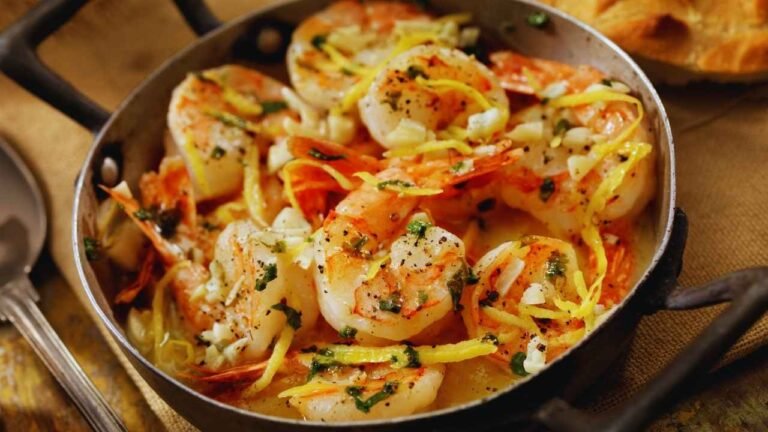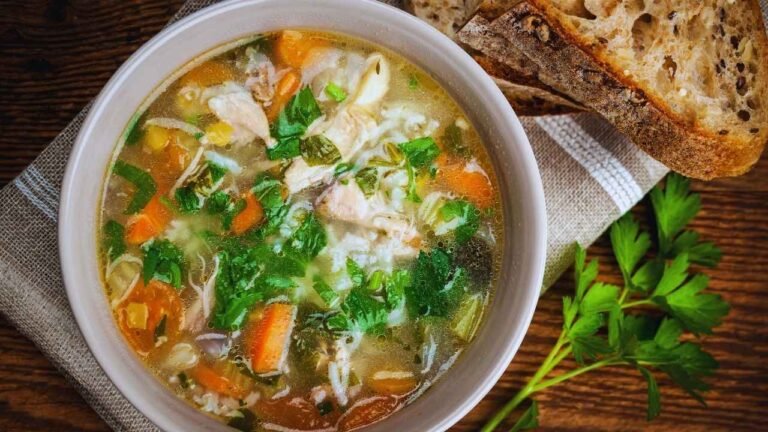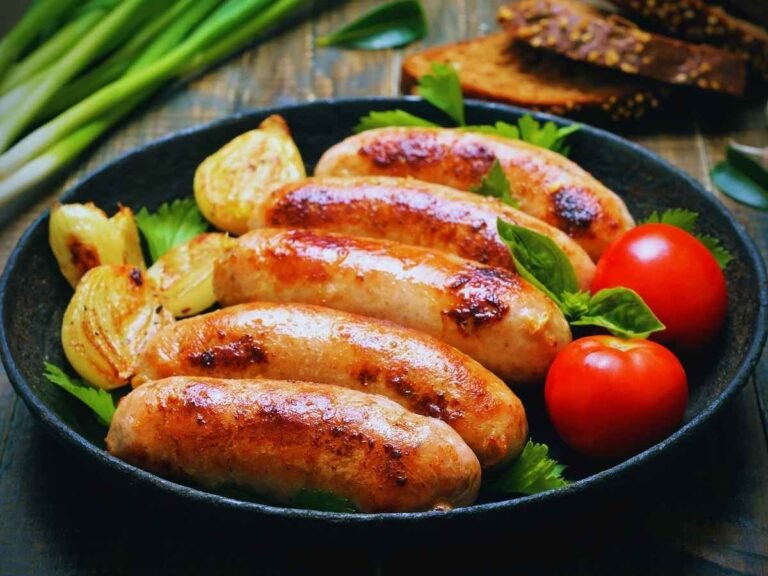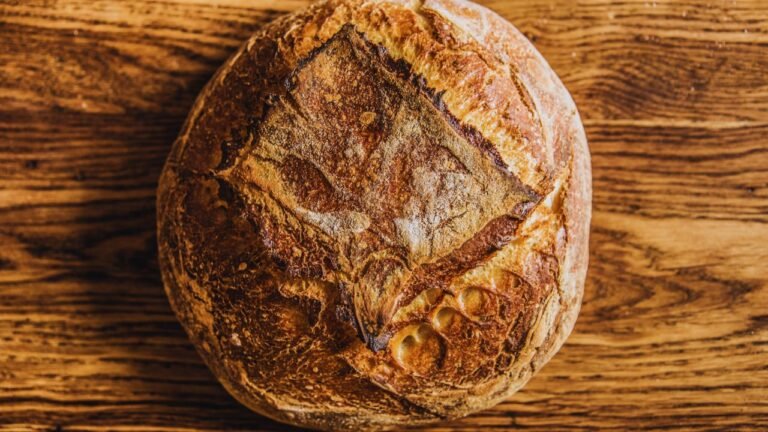How to Cook Oyster Mushroom Recipe: A Step-by-Step Guide
Home cooks and professional chefs love oyster mushrooms for their delicate texture and adaptability. This detailed guide helps both beginners and experienced cooks become skilled at preparing these delicious fungi. Their mild, seafood-like flavor makes them perfect for countless dishes.
Cooking oyster mushrooms creates many culinary possibilities. You can make simple sautéed dishes or complex stews and soups. The guide shows cleaning and preparation techniques that work best with these mushrooms. You’ll find professional tips to achieve perfect results when roasting, grilling, or adding them to your favorite recipes. Different cooking methods and creative seasoning combinations help bring out these mushrooms’ natural flavors.
Understanding Oyster Mushrooms
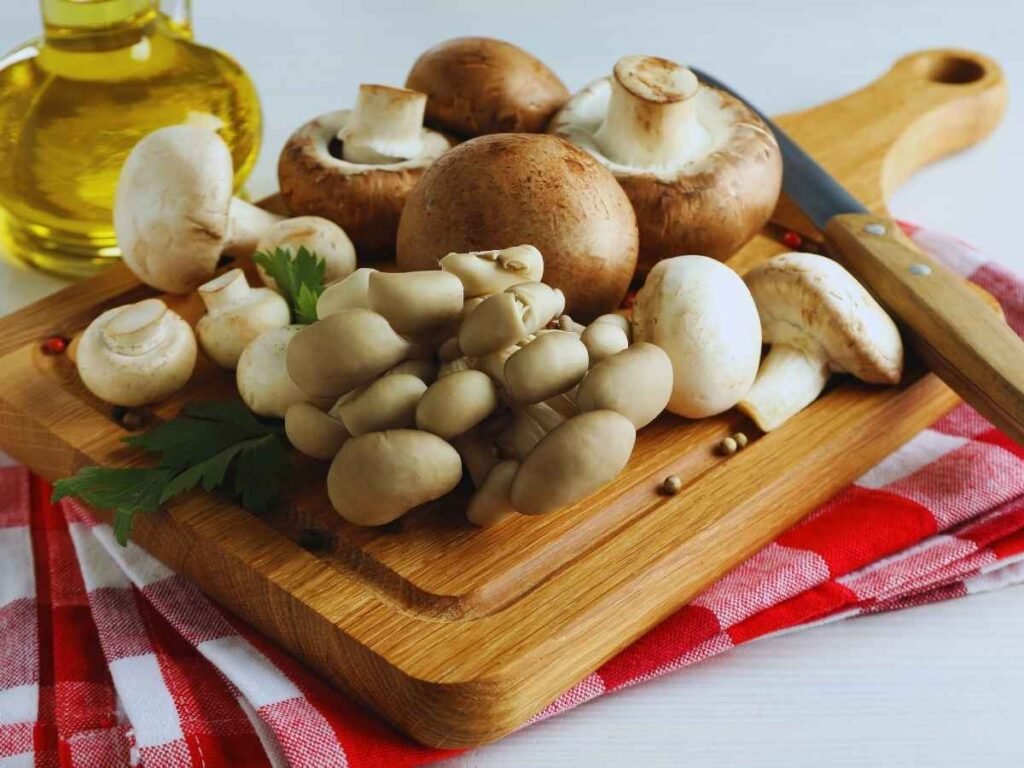
Oyster mushrooms got their name because they look just like oysters from the sea. They are part of the Pleurotus family that includes more than 200 edible species across the world. Chefs and home cooks love these versatile fungi because they work well in both old-world recipes and modern dishes.
Types of Oyster Mushrooms
Oyster mushrooms come in several distinct varieties that bring unique flavors to your cooking:
- Pearl Oysters: These mushrooms dominate North American markets and deliver a woody, nutty flavor
- Blue/Gray Oysters: Professional chefs prefer these mushrooms because of their meaty caps and mild taste
- Pink Oysters: The salmon-colored caps make these stand out, and they deliver a distinctive ham-like flavor
- Golden Oysters: Delicate caps characterize these beauties, which provide a pleasant nutty taste
- King Oysters: These giants stand out with their thick stems and make excellent scallop alternatives
- Brown Oysters: Culinary enthusiasts seek these mushrooms for their rich umami flavor
Nutritional Benefits
Oyster mushrooms deliver powerful nutrition in a delicate package. A single cup contains only 28 calories and packs these essential nutrients:
Nutrient Daily Value Iron 12% Niacin 27% Fiber 2g Protein 3g These mushrooms stand out as one of nature’s rare sources of vitamin D. Their beta-glucans boost heart health and strengthen immune function. The mushroom’s mineral content includes potassium, magnesium, and zinc that support overall health.
Flavor Profile and Texture
Oyster mushrooms stand out from regular button mushrooms due to their unique taste and texture. These mushrooms deliver a mild, subtle sweetness with hints of anise but lack the strong earthiness you’ll find in other mushrooms. Most varieties have a meat-like quality that makes them perfect for cooking, and some even carry subtle seafood notes.
Different varieties showcase unique textures, though a meaty yet tender consistency remains common to all. Proper cooking techniques bring out a delightful mix of softness and slight chewiness in these mushrooms. The mushroom’s caps feel more delicate to bite, while the stems pack a firmer texture, especially in king oysters. This range of textures makes them a great choice especially when you have different cooking methods in mind, from quick sautéing to slow roasting.
Essential Preparation Steps
Proper preparation is significant to bring out the best flavors and textures in oyster mushrooms. The right cleaning, trimming, and slicing techniques will give optimal results in any oyster mushroom recipe.
Cleaning Methods
Oyster mushrooms need minimal moisture to stay clean and fresh. These mushrooms grow on wood rather than soil, which makes them naturally cleaner than other varieties. A simple cleaning process will keep them in perfect condition.
- Look carefully for damaged or decaying parts
- Take a paper towel or mushroom brush to remove loose dirt
- Stubborn dirt needs a quick wipe with a damp cloth
- A quick cold water rinse works when needed
- Use paper towels to dry them right away
Important Note: The mushrooms should never soak in water. They absorb liquid fast and this changes their texture and cooking quality.

Trimming Techniques
Proper trimming will give a consistent cooking result and eliminates tough or undesirable parts. You should focus on keeping the most flavorful portions and discard any compromised areas. Start by understanding your mushrooms and look for:
- Wet or slimy spots that need removal
- Tough stem bases that require trimming
- Yellow spots or discoloration
- White fuzz or mold growth
The best results come from trimming the tough bottom portion where the stem connects to the growing medium. This fibrous area adds no culinary value to the mushroom’s taste. The trimmed stems can make a nutritious mushroom broth later.
Slicing Options for Different Recipes
Your oyster mushrooms’ texture and cooking performance changes based on how you cut them. Each variety needs its own cutting approach:
Pearl Oyster Mushrooms:
- Tear into strips along the gills to create a meat-like texture
- Keep whole clusters to make a dramatic presentation
- Separate individual caps when you need quick cooking
King Oyster Mushrooms:
- Score larger pieces in a diamond pattern so sauces absorb better
- Cut lengthwise to create “scallop-style” preparations
- Slice into rings for crispy, evenly cooked results
Consistent slice thickness helps everything cook uniformly. Medium-thick slices work best for sautéing – they won’t break apart yet cook through easily. Larger pieces hold up better in soups or stews and keep their texture during extended cooking.
Pro Tip: The final dish should guide your cutting method. Grilling and roasting need thicker cuts, while quick stir-fries and sautés work better with thinner slices.
Cooking Techniques for Oyster Mushrooms

Different cooking techniques help you become skilled at preparing oyster mushrooms and realize their full potential. These versatile fungi turn into delectable dishes through various methods. The right technique creates crispy edges and tender, meaty textures.
Sautéing
Oyster mushrooms taste best when you sauté them. This technique works quickly and delivers amazing results. The perfect sautéed mushrooms depend on two simple things – how you control the heat and space them in the pan.
- Place a large non-stick pan over medium-high heat
- Wait for the pan to heat up and add olive oil or butter
- Spread your mushrooms in one layer with gaps between them
- Let them cook without touching for 3-4 minutes until they turn golden brown
- Turn them over and cook another 3-5 minutes
- Toss in garlic and herbs during the last minute
Pro Tip: Your mushrooms need breathing room in the pan. They’ll steam instead of developing that beautiful golden crust if you crowd them together.
Roasting
Oyster mushrooms become incredibly delicious when roasted, giving you crispy edges and tender centers. This method works especially when you have larger clusters and king oyster mushrooms. You can achieve a beautiful golden-brown color while keeping the inside juicy by roasting them at 430°F/220°C.
To get perfect roasted mushrooms:
- Spread them in a single layer on a parchment-lined baking sheet
- Brush with olive oil and add your seasonings
- Cook for 20-25 minutes and check them after 10 minutes
- Watch for blistered, golden-brown surfaces
Grilling
Oyster mushrooms develop a distinctive smoky flavor when grilled, which makes them an excellent meat alternative. Heat management and timing play crucial roles in the process. Larger clusters are the best choice because they hold their structure well over the heat.
The ideal grilling approach involves:
- Starting a fire and letting coals develop
- Setting up different heat zones on the grill
- Letting mushrooms cook over indirect heat for 20-30 minutes
- Adding seasoning before and after grilling to achieve optimal flavor
Temperature Control: Hot coals work better than direct flames to concentrate flavors and prevent any kerosene-like taste in the mushrooms.
Adding to Soups and Stews
Oyster mushrooms bring depth and texture to soups and stews. Pink oysters excel in liquid-based dishes. These mushrooms know how to absorb flavors and still keep their structure, which makes them perfect for these dishes.
Here’s what you need to know about adding mushrooms to soups:
- Add them during the last 30 minutes of cooking
- Keep larger pieces to get better texture
- Think about which variety you’ll use – pink oysters add nice bitter notes
- Let the broth simmer gently so mushrooms stay firm
Temperature Note: Your liquid should stay at a gentle simmer (185-200°F) or your mushrooms might turn tough and rubbery.
Each cooking method brings out something special in oyster mushrooms. You’ll get crispy edges from sautéing and rich umami flavors from grilling. The secret to a soaring win is understanding what each technique needs and watching the temperature and timing carefully.
Flavor Enhancers and Seasoning Ideas

Proper seasoning can turn ordinary oyster mushrooms into culinary masterpieces that enhance their natural umami flavors. A skilled combination of herbs, spices, and complementary ingredients helps discover the full potential of these versatile mushrooms. These elements are the foundations of creating memorable dishes.
Herbs and Spices that Complement Oyster Mushrooms
Oyster mushrooms have a delicate flavor profile that works beautifully with classic and contemporary seasonings. The combination of garlic, thyme, and butter creates a rich, aromatic base that boosts these mushrooms’ natural qualities.
These herb and spice combinations work great together:
Base Herbs Supporting Flavors Optional Enhancers Thyme Black Pepper Nutmeg Rosemary Garlic Red Chili Parsley Coriander Seeds Ginger Tarragon Sea Salt Basil Red chili or chili flakes add a pleasant warmth to the cooking process without overpowering the mushrooms’ subtle flavors.
Creating Delicious Sauces
Oyster mushrooms know how to complement sauces of all styles. Each sauce brings its own unique character to your dish:
Classic Butter-Based Sauces:
- Combine unsalted butter with minced garlic and fresh herbs
- Add a splash of soy sauce to create umami depth
- Finish with a squeeze of lemon juice to brighten flavors
Asian-Inspired Glazes:
Sweet and savory elements create complex flavor profiles together. A simple glaze needs:
- Soy sauce or vegan oyster sauce to add umami
- Maple syrup or agave to balance sweetness
- Miso paste to build depth and complexity
- Cornstarch to thicken
Cream-Based Solutions:
Heavy cream makes an excellent base for rich sauces, especially when you have garlic and fresh parsley. You can blend half milk with heavy cream to create a lighter option that keeps the luxurious texture while reducing richness.
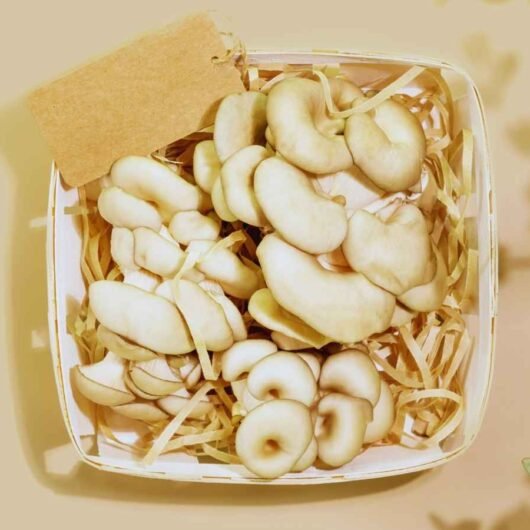
Pairing with Other Ingredients
Oyster mushrooms blend beautifully with many ingredients. Their meaty texture and mild flavor create delicious combinations that bring out the best in both components. Here’s what works well with them:
Grain-Based Dishes:
- Rice or quinoa soaks up their wonderful flavors
- Their tender texture adds something special to risotto
- Their umami notes give pasta dishes extra depth
Protein Combinations:
These mushrooms’ meat-like texture works great with both plant-based and traditional proteins. You’ll love them:
- Mixed into your morning scrambled eggs
- Served alongside grilled steak or chicken
- As the star in vegetarian main dishes
Vegetable Partnerships:
Fresh vegetables add nutrition and eye-catching colors. Try adding:
- Sweet baby peas that pop with color
- Crispy broccoli florets
- Light and delicate zucchini ribbons
- Nutrient-rich baby spinach
The secret to getting the most flavor lies in seasoning as you cook, not just at the end. This method lets flavors develop and meld with the mushrooms’ natural taste.
Sauce-based dishes need special attention to timing. Add robust herbs like thyme and rosemary early in the cooking process. Save delicate herbs such as parsley for the finish. This approach will give you a balanced dish that highlights your mushrooms’ natural flavors without overpowering them.
How to Cook Oyster Mushroom Recipe: A Step-by-Step Guide
Course: SidesCuisine: AmericanDifficulty: Easy4
servings10
minutes10
minutes100
kcalThis simple recipe for sautéed oyster mushrooms with garlic and herbs highlights the delicate, umami-rich flavor of the mushrooms. Quick to prepare, it’s a versatile dish that can be served as a side, mixed into pasta, or paired with grains and proteins for a delicious, healthy meal.
Ingredients
1 lb oyster mushrooms
2 tbsp olive oil (or butter)
3 cloves garlic, minced
1 tsp fresh thyme
1 tsp fresh rosemary (optional)
Salt and black pepper to taste
1 tbsp lemon juice (optional)
Fresh parsley, chopped (for garnish)
Directions
- Clean mushrooms: Wipe with a damp cloth. Trim tough ends.
- Heat pan: Add olive oil (or butter) to a skillet over medium-high heat.
- Sauté garlic: Cook garlic for 1 minute until fragrant.
- Cook mushrooms: Add mushrooms in a single layer, cook for 3-4 minutes. Flip and cook another 3-4 minutes until golden.
- Season: Add thyme, rosemary (optional), salt, and pepper. Stir to combine.
- Finish: Add lemon juice (optional) and garnish with parsley.
- Serve: Enjoy as a side dish or with grains, pasta, or protein.
Recipe Video
Notes
- Avoid overcrowding the pan while cooking the mushrooms to ensure they sauté properly. Give them enough space so they brown evenly and develop a crispy texture.
Conclusion
Learning to prepare oyster mushrooms creates endless possibilities in the kitchen. These fungi work beautifully with quick sautés and slow-cooked stews alike. A cook’s attention to cleaning, trimming, and cooking methods turns these delicate mushrooms into hearty, flavorful dishes that can replace traditional proteins.
The kitchen should always stock these nutritious mushrooms. Their health benefits and adaptable nature make them stand out. You can pair them with ingredients of all types and cooking styles to create exciting dishes. Oyster mushrooms excel as meat alternatives, side dishes, or recipe enhancers. Simple ingredients like these prove that proper technique and understanding lead to remarkable results.
FAQs
How should oyster mushrooms be prepared for cooking?
To prepare oyster mushrooms for cooking, start by gently wiping off any dirt using a damp cloth or paper towel. Trim the ends of the mushrooms and slice them as needed. Heat two tablespoons of olive oil in a large frying pan over medium-high heat, then add the mushrooms and cook for about 3 minutes.
What are the steps involved in cooking oyster mushrooms?
The process of cooking oyster mushrooms involves several steps: first, ensure the mushrooms are clean and trimmed. Next, heat some oil in a pan and add the mushrooms, allowing them to cook until they are golden and crispy. You can enhance their flavor by adding herbs, spices, or incorporating them into sauces.
Is it necessary to soak oyster mushrooms before cooking them?
It is not necessary to soak oyster mushrooms before cooking as they absorb very little moisture, only about 1 to 2% by weight. If the mushrooms appear dirty, they can be quickly rinsed under cold running water and then dried using a salad spinner.
Can the stems of oyster mushrooms be cooked?
Yes, the stems of oyster mushrooms are tender and edible. Unlike some other mushroom varieties, you do not need to remove the stems of oyster mushrooms before cooking.



